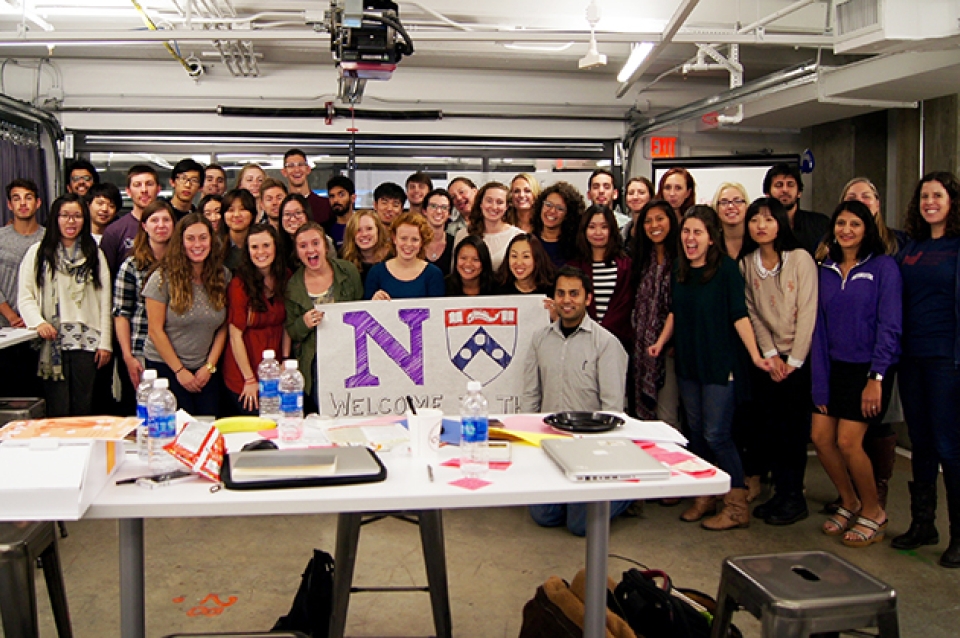November 19, 2015
PennDesign Students Take on Emergency Epinephrine Access

Photo courtesy Northwestern's Master of Science in Engineering Design Innovation program.
Stuart Weitzman School of Design
102 Meyerson Hall
210 South 34th Street
Philadelphia, PA 19104

Photo courtesy Northwestern's Master of Science in Engineering Design Innovation program.
Michael Grant
mrgrant@design.upenn.edu
215.898.2539
Graduate students from PennDesign's Integrated Product Design program (IPD) and Northwestern's Master of Science in Engineering Design Innovation program (EDI) agathered at Northwestern to explore the prompt: How might we increase awareness of and accessibility to life-saving medical devices and medications on campus?
Kicking off the 24-hour design challenge Friday evening, Dr. Ruchi Gupta and Ashley Dyer from Northwestern Medicine introduced the topic of anaphylaxis and the potential life-saving drug epinephrine.
A synthetic form of adrenaline, epinephrine is the only known treatment for life-threatening allergic reactions known as anaphylaxis. Triggers for anaphylaxis include: food, medication, latex or insect venom. Dr. Gupta and Ms. Dyer described symptoms of anaphylaxis, demonstrated use of epinephrine auto-injectors and fielded the students’ informed and insightful questions.
To better understand the ecology of bystander responses to life-threatening situations, the students benchmarked training and technologies including: Red Watch Band, First Aid, CPR and AED access.
Saturday morning, the students visited campus dining halls, athletic facilities, and the student center where they used intercept interviews, in context observation, low-fidelity prototyping and participatory design methods to build and test prototypes of services, physical devices and educational tools for increasing awareness and accessibility to epinephrine.
Emergency physician Dr. Bonnie Salomon, Dr. Gupta and others familiar with anaphylaxis and epinephrine fielded an additional Q+A over lunch Saturday before the students ventured out to test their prototypes and prepare presentations.
At the end of the 24-hour period, each team presented research strategies, insights and low-fidelity prototypes to a panel including faculty, physicians and design innovation professionals.
Read the full story on Northwestern's Segal Design Institute news blog.